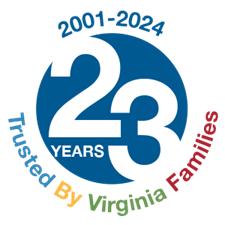Definition
Assistive Technology is any device, adaptive equipment, or service which enables people with disabilities to accomplish a task that would otherwise not be possible. The Technology-Related Assistance for Individuals with Disabilities Act of 1988 defines assistive technology as, 'any item, piece of equipment, or product system, whether acquired commercially off the shelf, modified, or customized, that is used to increase, maintain, or improve functional capabilities of individuals with disabilities'. Adaptive Technology, alternative technology or AT are also frequently used terms.
Types of Assistive Technology
Devices may be classified as low-tech or high-tech. Low-tech devices are simple, inexpensive devices. Examples of low-tech devices are simple magnifying glasses or canes. High-tech devices could include computer systems with voices, environmental control units and power wheelchairs. Assistive technology devices may be grouped by need or specific disability such as mobility, communication, activities of daily living and home modification.
An elderly home-based person with a cognitive disability may benefit from:
- bath safety equipment such as grab bars, a shower seat and non-slip floor covering,
- industrial timers for electric stoves, prescription bottles from with labels in larger print;
- a pillbox timer, clock or watch programmed to beep for medications -- or simply a watch with easy to see numbering are available, or
- doors with locks that don't require a key or that have a lever instead of a knob.
Assistive technology devices, that can enhance the life of a person with a hearing impairment, include:
- hearing aids,
- text telephones,
- telephone relay systems,
- telephone amplification aids,
- flashing emergency signals, and
- closed captioning television
Persons who are blind or have low vision may select products such as voice output computers, writing and magnification aids.
There are many products and equipment available to improve mobility and assist with activities of daily living. These range from electric scooters to dressing aids and can cost from a few dollars to thousands of dollars.
Radio Reading Services
Radio reading services are programs in which a narrator reads newspapers, magazines, and other current publications aloud daily. This service is to help people that cannot read for themselves because of a vision loss or another condition or disability. Follow this link to find a service near you
Finding Assistive Technology
Consumers and service providers often need assistance to obtain the most appropriate devices, services, and funding. Often the local area agency on aging can help you assess the need for assistive technology and find the right equipment. Listed below are additional resources:
Virginia Assistive Technology System (VATS)
Promotes public awareness, systems change, and advocacy in support of greater access and use of assistive technology. Virginia Assistive Technology System is a program of the Virginia Department of Rehabilitative Services. VATS Provides specialized information, referral, and advocacy for Virginians who need help finding and paying for assistive technology devices through its VATS Information Technology Access/Information and Referral Program.
Contact Information: 1-800-435-8490
Virginia Department for the Blind and Vision Impaired
Administers programs such as independent living, mobility and employment training, library services and elderly blind financial assistance.
Contact Information 1-800-622-2155
Virginia Board for People with Disabilities
Engages in policy, innovation, and advocacy on behalf of people with disabilities.
Contact Information: 1-804-786-0016
Virginia Department for the Deaf and Hard of Hearing
Administers an equipment loan program and provides interpreter services.
Contact Information: 1-800-552-7917
disAbility Law Center of Virginia
Offers legal assistance, advocacy, consultation on the Americans with disabilities act, and information & referral.
Contact Information: 1-800-552-3962
Additional Resources
The American Council of the Blind
The Blinded Veterans Association
The Hearing Loss Association of America
The National Association of the Deaf
The National Federation of the Blind
Assistive Technology Loan Fund (ATLF)
Costs of Assistive Technology
Many low-tech devices can be bought from discount and department stores. While these are inexpensive, they can improve life quality for many individuals with disabilities. High-tech devices for persons with complex needs may require a professional evaluation and most of these are costly. Options for finding help paying for assistive technology include:
- Medicare, Medicaid, and private insurance are the traditional payers for high-tech devices. When a person's primary care provider has prescribed specific technology (e.g. a walker), Medicare or Medicaid may cover all or part of the costs.
- For people with a goal to return to work, the Virginia Department of Rehabilitative Services (DRS) may purchase items necessary to help them secure and maintain a job. The Department of Rehabilitative Services also administers a fund of last resort, the consumer services fund, and the assistive technology loan fund program which offers assistance in obtaining low-cost bank loans to purchase devices. For information about these programs contact 1-800-552-5019.
- Less traditional funding can often be obtained from civic groups, churches, foundations, and charitable organizations. For example, in many communities, the local Lions Club chapters operate programs that provide eyeglasses at no charge to older people.
Assistive Technology Loan Fund Authority
The Assistive Technology Loan Fund Authority (ATLFA) is a Commonwealth of Virginia State Authority created with public funds to help Virginians with disabilities obtain assistive technology. The ATLFA provides affordable financing alternatives (loans with below-market interest rates, no down payments, longer repayment terms, etc.) to help make adaptive equipment a possibility for individuals who might not otherwise be eligible for borrowing. Any type of equipment can be financed as long as it relates to an individual’s disability; examples include recreational equipment, vision aids, communication and hearing devices, and vehicles with modifications.
Regardless of income, any Virginia resident with a disability, or a caregiver of a person of any age with a disability, can apply for a loan. Credit history, income, and debt are considered for loan approval. Individuals with no credit history or poor credit are considered; special consideration given to disability and medically related credit issues. To apply, call 1-866-835-5976 or visit www.atlfa.org. This provides low-interest loans for assistive technology for Virginians with disabilities.
Centers for Independent Living administered by the Department of Rehabilitative Services provides case management, personal assistance services, funding and advocacy. Contact VATS (1-800-435-8490) to find the center for independent living nearest to you.
Consumer Tips
If you are introducing technology to the elderly the following hints may be helpful:
- Technology must be seen as needed and meaningful to the person's lifestyle. Involve the consumer and/or the caregiver in choosing the device and any supporting services that accompany the device.
- Caution and disbelief in one's capability may be an obstacle in accepting the new technology and must be considered during the orientation period.
- Allow for a generous amount of training time and remember to break the time into several short sessions. If possible teaching should take place in the home, on the job or wherever the technology will be used.
- Too much emphasis on the technical aspects of the device might be overwhelming. Keep the emphasis on the practical, day-to-day benefits.
- Offer repeated and varying cues while adjusting to the new technology in order to make learning easier. It's important for an older person's caregiver to understand how to operate and troubleshoot the technology device.

